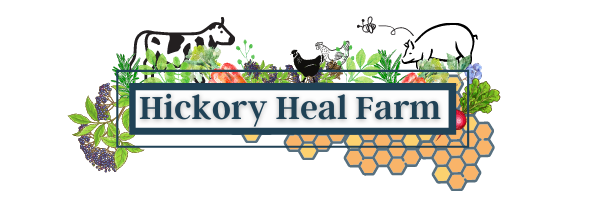New Allergy Herbal Tea Blend is made with herbs to support your Respiratory system against seasonal allergies while bringing peace to a stressed system. Goldenrod the unsung herb. Unnoticed, if not blamed, for everyone’s pollen woes. In truth, Goldenrod is an excellent wound healer with anti-bacterial actions. With its toning anti-inflammatory abilities, it works from head to toe…..well, bladder. In a warm tea, Goldenrod encourages upper respiratory support, and a cool drink helps with UTI issues. This herbal tea blend would work best as a Tonic to give the Nettles an opportunity to do the best to work in you.
All Organic:
Althaea officinalis, Marshmallow Root, is a demulcent for the mucus membranes. It has been approved as the root for oral and pharyngeal mucosa irritation, dry cough, and mild irritation of the gastric mucosa.
Zingiber officinale, Ginger with antimicrobial properties and the ability to thin mucous and support expectoration.
Glycyrrhiza glabra, Licorice Root is a broad-spectrum antiviral that either prevents a virus from entering cells, directly kills a virus through a variety of mechanisms (e.g., stops replication, inhibits growth), or stimulates the immune system to attack a virus. Its primary antiviral constituent is glycyrrhizin, which is 50 times sweeter than sugar and gives licorice its sweet taste. Licorice is an effective antiviral for a long list of viruses which include several strains of influenza, respiratory viral infections, pneumonia, encephalitis, herpes simplex, and hepatitis. It also has some antibacterial action.
Solidago spp., Goldenrod support for the upper respiratory system with a focus on the toning, mildly stimulating, and antimicrobial actions upon the mucous membranes. It is through this toning, mildly stimulating, and drying action that Solidago has gained popularity in modern times as upper respiratory support through the allergy season. Wood (2008) indicates that Solidago is specific to the manifestation of allergies with red conjunctiva, glazed eyes, watering eyes, and itchy nose. He also indicates that Solidago is specific for cat allergies.
Sambucus nigra L. ssp. canadensis Elderflower is also anti-inflammatory, anti-catarrhal and expectorant. It helps in cases of colds, sinusitis, and sinus allergies to reduce inflammation of sinus tissue and allow for the movement of congestion. Research reviewed by Ulbricht et al. (2014) suggests that “herbal preparations containing elder may result in less swelling of mucus membranes, better drainage, milder headache, and decreased nasal congestion.”
Prunus serotina, Wild Cherry, has expectorant, antitussive, astringent, antispasmodic, anti-inflammatory, bitter, and nervine actions.
Bioflavonoid Complex, Lemon Peel helps reduce Hay Fever Symptoms.
Mentha spp., Mints are rich in minerals and vitamins. Peppermint contains magnesium, phosphorus, calcium, iron, niacin, potassium, sodium, selenium, riboflavin, thiamine, niacin, vitamins A and C, and protein.
Nepeta cataria, Catnip tea has historically been used to treat issues like coughs, hives, fevers, and viruses.
Matricaria chamomilla, Chamomile is also used for travel sickness, stuffy nose, hay fever, nervous diarrhea, ADHD, fibromyalgia, restlessness, and sleeplessness.
Scutellaria lateriflora, Skullcap: The nervous system-nourishing skullcap also has antispasmodic, analgesic, and hypotensive actions that help relieve stress-related tension headaches, back spasms, and facial tics as well as controlling tremors (such as those associated with Parkinson’s Disease), restless legs syndrome, and Lyme Disease-related neuralgic pain (Kuhn and Winston, 2008; Holmes, 2006).
Urtica dioica, Nettles can be useful in cases of hay fever and allergies due to it’s anti-inflammatory action. Mittman (1990) conducted a clinical study in which more than half of patients suffering from allergic rhinitis reported symptom abatement after taking a freeze-dried stinging nettle leaf preparation, while all treated patients reported symptom improvement. Helms and Miller (2006) suggest that nettle’s anti-inflammatory action may be attributable to its histamine content and recommend an adult dose of 300 mg twice daily of freeze-dried nettle leaf.
Rubus spp., Raspberry Leaf is vitamin- and mineral-rich, containing vitamins E, C, and B complex, calcium, iron, phosphorus, potassium, niacin, magnesium, and manganese. The astringent nature of raspberry leaf is helpful for relieving diarrhea and can be taken as either a tea or tincture for this purpose. The astringency and its anti-inflammatory properties help ease mouth problems, such as ulcers, bleeding gums, and inflammation; and as a gargle, soothes sore throats (Hoffman, 2003).
Calendula officinalis, Calendula acts as an immune stimulant and is antibacterial and antiviral, so it is considered beneficial when colds, flu, and other infections take hold. Taken internally as an antimicrobial, calendula is used to help the body resist pathogens. Research has shown that calendula is effective against flu and herpes viruses (McIntyre, 1996). A hot calendula infusion acts as a diaphoretic, moving energy outward by stimulating circulation and promoting sweating. This action helps kill the infectious pathogen (and subsequently reduces fever) and removes toxins from the body. McIntyre (1996) suggests that in the case of chickenpox or measles, calendula helps the virus erupt on the skin and expel toxins. Calendula is a lymphagogue, meaning it cleanses the lymph system by moving clogged lymph fluid, removing toxins from the lymph, and decongesting swollen lymph nodes. Keeping the lymph system is moving and functioning as intended is vital for a robust immune system.
Filipendula ulmaria, Meadowsweet is most commonly taken as an infusion or a tincture of the aerial parts or as powdered root: Anti-inflammatory, Anti-histamine, and anti-bacterial.
I grow Calendula, Meadow sweet, Raspberry Leaf, Nettles, Skullcap, Chamomile, Catnip, Elderflower, and Goldenrod.

















Reviews
There are no reviews yet.